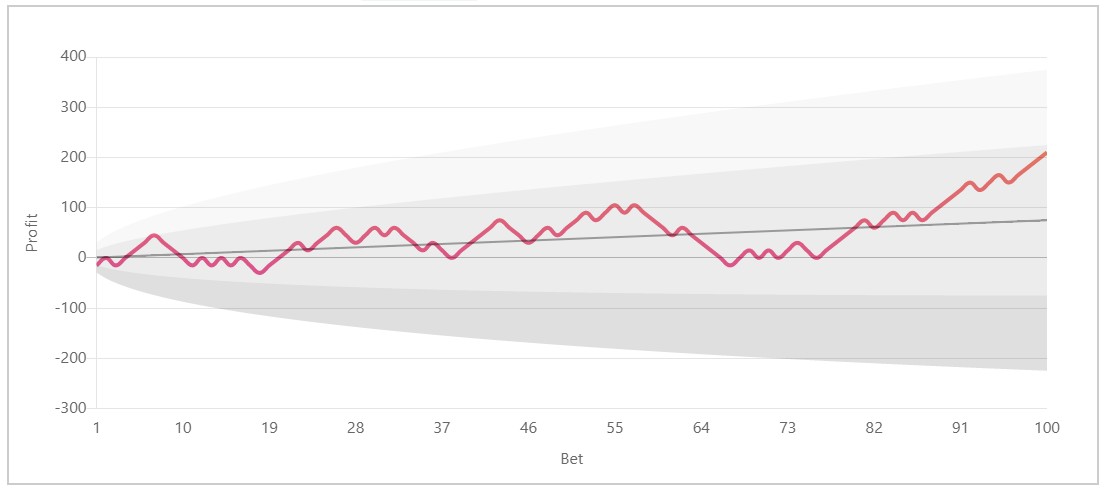The power of randomness is greater than you think
If you throw a coin ten times and gets ten heads in a row, it's just an unlikely random event.
If you throw a coin ten thousand times and gets 55% heads, you know the coin is unbalanced.
Why? Because of statistical significance. Ten coin flips are just not enough data to draw any conclusions from.
It's the same in sports betting.
If you place 100 bets with an average odds of 2.0 and get a 5% yield (profit per dollar invested), there's still a one-in-three chance you got that result just out of pure luck. The p-value is below 0.3.
The number of bets required to reach statistical significance is much higher than what most people think intuitively.
For example, if you after 1100 bets still have 5% yield – you're most likely on to something. The risk of these results being pure chance is now just 5% (p <0.05). So there is a 95% chance that there is something else going on. Like skill, or a profitable value betting product.
A p-value below 0.05 is generally accepted as "statistically significant" – but that is a highly arbitrary limit. There is nothing stopping you from requiring stricter proof, like a p-value below 0.01.
If you want to dive deeper into the math behind this, I recommend reading about statistical significance, the t-test and the p-value.

Author: Simon Renström, RebelBetting Founder
Simon is the chief architect behind the sure betting and value betting products. A veteran software developer and entrepreneur that founded RebelBetting in 2007.

